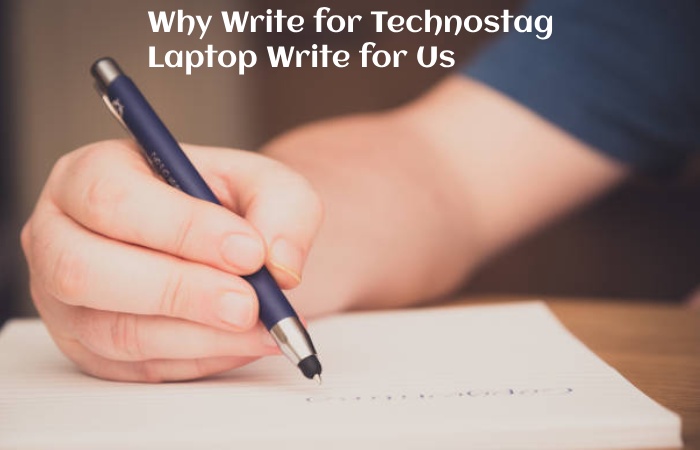Laptop Write For Us

A laptop is a personal computer that can be simply moved and used in a many of locations. Most laptops are designed to have completely of the functionality of a desktop computer, which means they can usually run the same Software and open the same kinds of files. Though, laptops also tend to be more expensive than similar desktop computers.
The laptop market is very flexible. It easily adapts to increasingly specific require almost annually. For example, you can find notebooks, netbooks, ultrabooks, or tablet PCs. They are adaptable to nearly any need dependent on the model you choose: Swap to a desktop PC. Their size is important since they are designed to work with them and need a monitor of specific sizes. In such models, power is more important than autonomy.
How To Submit Your Guest Post?
To submit your article at technostag.com , you can send an email or pitch us at contact@technostag.com.
Why Write for Technostag – Laptop Write for Us
- Writing for Technostag can give massive exposure to your website for customers looking for Laptop.
- Technostag presence is on Social media and will share your article for the Laptop related audience.
- You can reach out to Laptop enthusiasts.
Search Terms Related to Laptop Write for Us
- Microcomputer
- End User
- Technician
- Minicomputers
- Mainframes
- Time-Sharing
- Home Computer
- Commercial Software
- (“Freeware”)
- Free And Open-Source Software
- Binary
- Operating System
- Microsoft
- Intel
- Dominated Much Of The Personal Computer Market
Search Terms for Laptop Write for Us
- Laptop Write For Us
- Laptop Guest Post
- Laptop Submit Post
- Laptop Contribute Post
- Submit An Article Laptop
- Laptop Write For Us
- Laptop Guest Post
- Laptop Submit Post
- Laptop Contribute Post
- Laptop Suggest A Post
- Laptop + Write For Us
- Laptop + Guest Post
- Laptop + Submit Post
- Laptop + Contribute Post
- Laptop Guest Author
- Write For Us + Laptop
- Guest Post + Laptop
- Submit Post + Laptop
- Contribute Post + Laptop
- Writers Wanted Smartphone
- Write For Us Computer
- Guest Post Desktop
- Submit Post Creativity
- Contribute Post Artificial intelligence
- Become A Guest Blogger Technology
Article Guidelines on Technostag – Laptop Write For Us
- We at Technostag welcomes fresh and unique content related to Laptop.
- Technostag allow a minimum of 500+ words related to Laptop.
- The editorial team of Technostag does not encourage promotional content related to Laptop.
- For publishing article at Technostag email us at contact@technostag.com.
- Technostag allows articles related to Latest Technology, Gadgets, Artificial Intelligence, Gaming, Start-Up, Cyber Security and many more
Related Pages
Gadgets Write For Us
Machine Learning Write For Us
Digital Marketing Write For Us
Anti Virus Write For Us
Gaming Write For Us
E-commerce Write For Us
Software Write For Us
Data Analysis Write For Us
Saas Write For Us
Cryptocurrency Write For Us
Smartphone Write For Us

